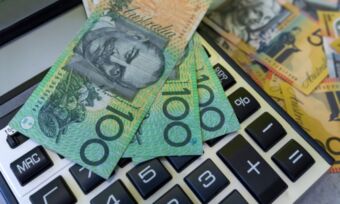Exchange Traded Funds (ETFs): The Ultimate Guide
The popularity of Exchange Traded Funds (ETFs) has significantly grown in the past few years and they can form an important part of many investors’ portfolios.
But what are ETFs and how, when and why should they be considered as a part of your own investment strategy?
What are ETFs?
ETFs are a security that typically tracks a stock index or sector. You can also get ETFs that track a commodity, bond or a range of assets. ETFs are traded on the stock market, and when you buy an ETF you are buying shares of a portfolio that tracks the yield and return of its corresponding index or asset.
How does an ETF work?
When you buy into an ETF, you are effectively purchasing and getting exposure to a range of shares included in that fund, instead of one share. For example, think about the ASX 200. If you had to buy all 200 shares one by one, you would pay brokerage fees for each investment you make and you would need a huge portfolio to be able to pay for them. An ETF allows you to buy a little piece of each of the top 200 companies traded on the Australian Securities Exchange as a bundle.
If you’re new to investing, check out this Glossary of all the terms you’ll need to know when getting started with ETFs.
How can I buy ETFs?
When you want diversification in one trade and comparatively lower fees than actively managed funds, ETFs may be an investment worth thinking about. Investors can buy shares through any share brokerage account, most commonly online. So, which providers offer ETFs in Australia? Here’s a rundown of the main providers listed on the ASX.
Another important consideration is knowing when it’s right for you to purchase, when to keep (or hold) ETFs in your portfolio, and when you may need to sell ETFs. You can learn more about different strategies when it comes to buying, selling and holding ETFs.
What’s the difference between Active and Passive ETFs?
As their name would imply, active ETFs are actively managed. A fund manager or team oversees the ETF. Actively managed ETFs offer similar benefits in terms of liquidity and tax efficiency to passive ETFs and have a benchmark index, but the managers of these funds may deviate from the index in response to market changes or where they see fit. Essentially, the portfolio construction is at the discretion of the fund manager.
Though it is their goal, it’s important to remember there is no guarantee an Active ETF will outperform a passive equivalent. As active managers have the freedom to trade outside the index, shareholders may not always know their portfolio construction. ASIC’s regulatory measures aim to protect traders and investors alike. ETF investors typically have a transparent view of their fund’s holdings and investment value.
What are the best performing ETFs?
ETFs cover a wide range of asset classes and individual assets. This includes Australian shares, international shares, commodities and currencies. Canstar classifies ETFs into the following types:
- Australian Broad Based ETFs
- Australian Sector ETFs
- Australian Strategy Based ETFs
- International Broad Based ETFs
- International Sector ETFs
- Commodity ETFs
- Currency ETFs
This article displays one-year returns for different types of ETFs in Canstar’s database. Bear in mind that past performance is not a reliable indicator of future performance. When comparing ETFs, it can also be helpful to consider factors such as fees, tracking error (where an ETF deviates from the value of the index or asset it is tracking) and the price of the ETF compared to the net asset value (NAV).
Latest in ETF Guide
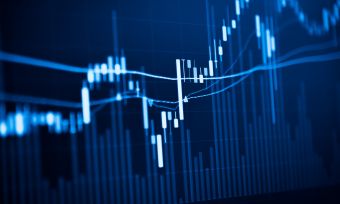
ETF Guide - July 7th
How to choose an ETF
If you’ve made the decision to invest in an exchange traded fund, the next step is to decide on a fund that’s right for you. But, with more and more ETFs to choose from, how do you narrow it down? Here are a few things you may want to consider before investing in an ETF.
– Read more
ETF Guide - September 30th
Chapter 8: Why you need a plan to invest in Exchange Traded Funds
Investing is an undoubtedly important step in everyone’s financial journey through life. It allows us to take control of the money we work so hard for, and get it working for us. Whether it’s building up...
– Read more
ETF Guide - September 30th
Chapter 7 - Investing for Different life stages using ETFs
As you move through life, your investment needs to move with you. When you’re just entering the workforce in your early 20s, with a long investment horizon ahead, your financial circumstances and investment objectives will be...
– Read more
ETF Guide - September 30th
Chapter 6: Why You Might Consider Ethical ETFs
The market for ethical or environmental, social and governance (ESG) exchange-traded funds (ETFs) is massive right now. Let's learn why. Last year, assets invested in ESG ETFs hit an all-time high as more and more investors...
– Read moreLatest in Investor Hub
What's your investor persona?
Disclaimers and important information
- This advice is general and has not taken into account your objectives, financial situation, or needs. It is not personal advice. Consider whether this advice is right for you, having regard to your own objectives, financial situation and needs. You may need financial advice from a suitably qualified adviser. Consider the product disclosure statement (PDS) before making any financial decision. For more information, read Canstar’s Financial Services and Credit Guide (FSCG), and read our detailed disclosure, important notes and liability disclaimer.
- The views, opinions, and positions expressed in the articles are the views of the author(s) or interviewee(s) alone, and do not necessarily reflect the views of Canstar.
- ETFs are considered by ASIC to be complex financial products. Some are more complex and risky than others. For more information on ETFs and risks associated with them, see ASIC’s Moneysmart website at https://moneysmart.gov.au/managed-funds-and-etfs/exchange-traded-funds-etfs.
- All information about performance returns is historical. Past performance should not be relied upon as an indicator of future performance; unit prices and the value of your investment may fall or rise.
- Canstar may earn a fee for referrals from its website tables, and from sponsorship of certain products. Fees payable by product providers for referrals and sponsorship may vary between providers, website position, and revenue model. Sponsorship fees may be higher than referral fees. Sponsored products are clearly disclosed as such on website pages. They may appear in a number of areas of the website such as in comparison tables, on hub pages and in articles. Sponsored products may be displayed in a fixed position in a table, regardless of the product’s rating, price or other attributes. The table position of a Sponsored product does not indicate any ranking or rating by Canstar. For more information please see How We Get Paid.

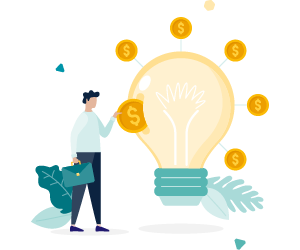
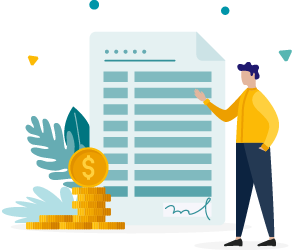 Chapter Two
Chapter Two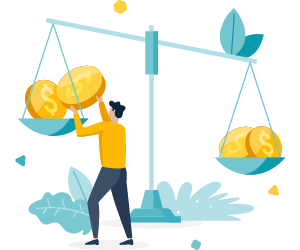 Chapter Four
Chapter Four









